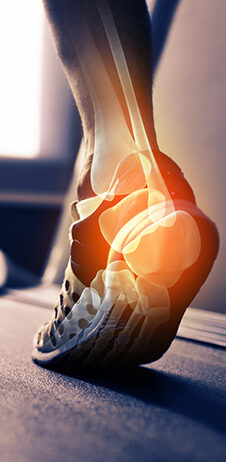Heel Pain
Plantar fasciitis is the most common cause of heel pain. The plantar fascia, a band of tough tissue connecting the heel bone to the toes, becomes irritated or inflamed. Heel pain which is often worst in the morning when getting out of bed or getting up from rest, is the most common symptom. Arch pain may also be present in some individuals as the plantar fascia runs from the heel out to the toes.
Heel spurs are abnormal growths of bone that can develop on the bottom of the heel bone (calcaneus). It may be caused by an abnormal gait, structural and functional foot mechanics, inappropriate shoes, or certain activities. Although many people may have heel spurs, only a few these people will present with foot pain. Heel spurs can occur in people with plantar fasciitis, but they do not cause plantar fasciitis. People with flat feet or high arches may be more likely to have foot pain from heel spurs.
A bruised heel is a bruise of the fat pad of the heel. It can occur after stepping on a rock or other hard object or jumping / falling from a height.
A fracture of the heel bone (calcaneus) is usually trauma related. It is most often caused by high impact to the heel, for example, when a person has fallen from a height or been in a car accident. Heel pain, bruising, swelling, limping, or difficulty walking are the main symptoms.







